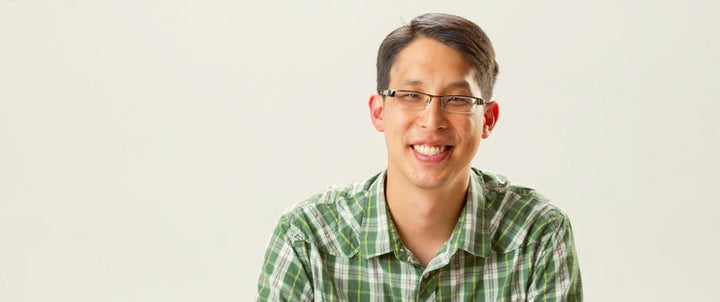
It’s one thing to tell someone to do what they love. It’s entirely another thing to actually do it — especially if there’s no money in it.
Gene Luen Yang loved graphic novels, but he wasn’t expecting to make any money creating them.
“When I started in comics in the 90s, the industry was not in a good place… Marvel Comics had actually declared bankruptcy,” Yang explained. “People were predicting that it was just gonna blink out of existence. With it, they were expecting the entire American comic book industry to collapse. If Marvel Comics gets taken out, 60–70% of comic book stores would get taken out with it. They relied so heavily on Marvel product.”
“So it was really bleak, it was like apocalyptic. I remember going to a convention and listening to an artist that I really admired talk about how we were about to see the death of the American comic book. How comic books were gonna go the way of poetry. Where poetry, epic poetry, used to be this mass medium, everybody read it. Now, it’s read by very few people. That’s what he was predicting, he was predicting that comic books were gonna go that way.
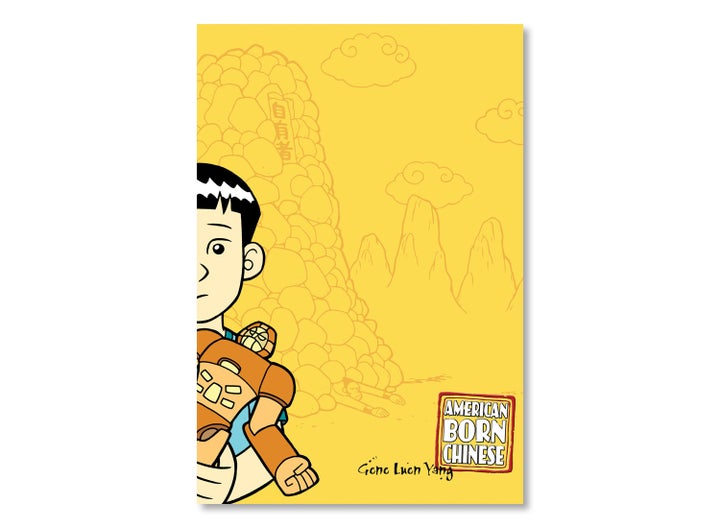
“At that point, I was not expecting to be able to make a career of any kind out of comics. I just wanted to do it because I wanted to do it, because I liked it. I loved it. So for “American Born Chinese,” my main goal was to finish the story and then I was hoping that somebody would be willing to collect it in a graphic novel form.”
This economic reality is why he studied computer science at University of California, Berkeley. He took a job teaching computer science and served as director of information services at Bishop O’Dowd High School in Oakland, California. He would teach by day, and work on comics by night.
“My original art, I had done it with the eye of eventually producing it as a black and white graphic novel, because that was cheaper. Once I signed with First Second, and they said that they wanted it in full color, I was super happy. I never thought it would be in full color. Second, I had to redo some of the art so that it could be colored.”
His deal with First Second Books, the publisher of “American Born Chinese,” started when Yang’s friend, fellow graphic novelist Derek Kirk Kim, recommended his work. Kim and Yang had worked on a comic together during the late 90s entitled “Duncan's Kingdom,” which was published through Image Comics.
The Power of Peers
“Derek and I are a part of a group of cartoonists who all came up together,” said Yang. “We were all in the Bay Area, in the mid- to late-90s, we used to meet together once a week to draw and write and look over each other’s stuff. I never went to art school, so I felt like that was my art school. As soon as one of us got our foot in the door somewhere, we would try to keep it open for everybody else. So now, pretty much all of us from that initial group has been published by somebody.”
Yang said, “I don’t know if I would’ve had the energy to sustain myself had I not been a part of that group. The way we met was just through the convention scene, I met Derek and this other guy named Jesse Hamm who now does work for Marvel. He does inking work for Marvel. We met just during an afterparty at a local convention. We hit it off, we were all around the same age, we’re at the same place in our careers, which was at the very beginning, and we just started hanging out.”
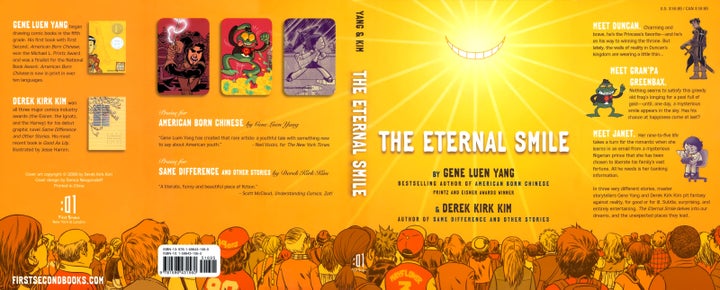
“I learned a ton from those guys that I hung out with. Derek, and Jason Shiga, and Lark Pien — who colored “American Born Chinese” for me — and she does these beautiful comics of her own as well,” said Yang. “From them, I learned how to approach story, how to pace.
“Each of those creators is so different, but I do think there’s something that ties us all together. There’s a certain way we approach story that is similar. Hanging out with those guys, seeing how they approach comics, was hugely influential on me. Also seeing what they were reading, too. We would get together, we would trade graphic novels.
“It got to the point where Jason Shiga actually built a graphic novel library. We would all just bring a bunch of graphic novels and donate it into the library. Whenever you wanted to take something out, you would take something out. Derek turned me onto Chester Brown, who was hugely influential on me. We were just trading comics back and forth all through our twenties.”
In a time when internships and apprenticeships are more coveted than ever, it’s a good reminder to hear the success of a writing group run by peers. It’s much more common than I’d have thought though (I would consider the RAID Studio to be evidence of that). Yang elaborated on his process for writing in a group.
“It was pretty informal. We’d get together, we’d have dinner, and then we’d get together at somebody’s house and we’d start drawing. We would pull out pages to work on, or we would pull out scripts to work on, and it would go back and forth,” he said.
“You could see what tools the other person was using. You could see what kind of brush they were using, you could see how they formatted their scripts, you could see all that kind of stuff. It was really nice.
“We did go through a period when it got structured. I think for a period of six months, this guy named Jesse Reklaw — he’s a published cartoonist as well, he’s with Fantagraphics — but he wanted to do something really hardcore, so he created a comic seminar. A bunch of Bay Area cartoonists would get together at his loft. We would break up into groups and we would critique each other, in really hardcore ways. I was working on “American Born Chinese” at that time, and they gave me some notes that ended up affecting the way the book ended up.”
The group’s generosity and communal attitude was a catalyst for this type of learning. I asked Yang if he ever got protective of his ideas and concerned someone might copy him.
The Magic Is in Execution, Not Ideation or Inspiration
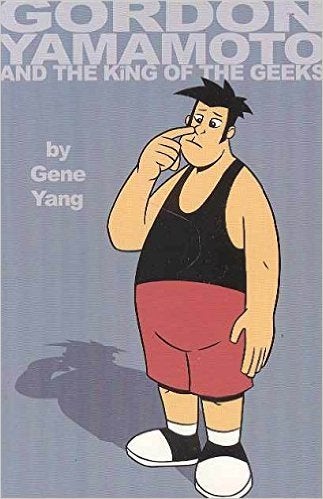
“Really early, at the very beginning, I remember when I put out the first issue of ‘Gordon Yamamoto And The King Of The Geeks,’ I went on the Library of Congress website and I printed out all those copyright forms and I filled them out. I sent in copies, all that kind of stuff.
“When you’re starting off, all of us have that fear. But then, once you get into it, you realize ideas are just so cheap.
“Everybody has ideas! And any idea you have, that same idea probably popped up in at least five, six, seven other people’s heads. If not hundreds of people’s heads. It really comes down to the execution, I think. That’s the hard part.
“Embodying the idea is the hard part. After a while, I never really thought about it. Also, I really trusted my friends, too. I think a good work comes out of your own voice. A voice that’s authentic to you.
“So you can have two people with the same idea, and that idea executed is going to look 180 from each other, to the point where you can’t even recognize that the original seed was the same idea. So it just felt like what the comic seminar was about, what hanging out every week was about, was kind of supporting each other as cartoonists and helping each other find authentic storytelling voices. It didn’t matter – we could all have the same idea, and the way each of us would execute it would be totally different.”
Yang’s “American Born Chinese” shattered any obscurity he had, and skyrocketed him to critical and commercial opportunity. It was the first graphic novel to be nominated for a National Book Award. (That’s one of the more prominent amongst the very long list of accolades.)
The graphic novel itself was a combination of three stories, dealing with growing up as an asian in America in the 1970s and 80s. It combined elements of faith, racism, and humor into one complete package. Yang is Catholic, and recalled his teacher Thaisa Frank’s advice in an interview with Vox, “‘Don't ever write about faith directly. You should write about your life. Pull your writing from your life, and if your faith is actually important to you, if it's something you actually live out, then it will show up in your writing.’ I've been trying to live by her advice ever since, because I think there's wisdom in that.”
He said to me, “She was a wonderful teacher. But, I think I live a really boring life. Out of all the people I know, I probably live the most boring life. I’m married with kids, I like staying at home, I’m an introvert, I live a pretty boring life.
“But I do think that there are commonalities that every human faces. We each try to make meaning out of our live. We each deal with a certain amount of what feels like randomness in our lives. We struggle with a lot of fear and a lot of self-doubt. We struggle with jealousy. All the seven sins, we all struggle with.
“Even when I’m writing Ang, or even when I’m writing Superman, who are thousands of times more interesting as beings than I could ever dream of being — there are still underlying emotional realities that are going to be the same. When Superman faces up against Brainiac, and he has all these doubts, that’s like me facing a blank page and having all these doubts. The emotional reality is the same.”

Yang’s approach to creativity sets him apart from the majority of people in creative work. “One of the mistakes that I made when I was young was thinking that creativity was a feeling. Like you have to feel creative before you could start writing,” he said. “Whereas now, I see it more as like a craft, or like a job. You have to sit down and do it even if you don’t feel like doing it. Writing a crappy script is better than writing no script at all.”
His work ethic is admirable. I asked him about doing both a full-time teaching job, and juggling that while writing “American Born Chinese” and his earlier comics.
“It felt like really different energy to me,” he said. “I don’t think I could’ve done it if I were a programmer. I feel like programming and making comics pull from the same energy bucket. But teaching is so extroverted — you just hang out with people all day, and you’re constantly talking to people, trying to figure out their emotions. When you’re teaching, you’re trying to get a concept into their heads.
“Comics felt like the exact opposite. I was just alone, in front of a drawing table. When I started, I was living in this one bedroom apartment — actually when I started-started, I was living with these two other guys. Eventually, after I got married, I was living in this one bedroom apartment with my wife. She would watch TV while I would draw. That’s just how we would relax. I would hear it, I would hear the show that she was watching. Sometimes I would be able to follow the plot. But it really felt like a complete break for me from my classroom, because they were just so different.”
Thinking back to his teaching days, Yang reminisced on his own childhood as well. “When I was teaching, I remember there’d be a gang of asian kids hanging out and then they would have their token white kid. That would never have happened when I was a little kid. When you start seeing that, you realize there’s something going on. There’s a culture that’s being defined, and that’s attractive enough that people who are not born into that culture are trying to get in. It’s nice to see. I don’t think it’s fully defined, and maybe it never will be, but there’s definitely something emerging.”
Comics: The Outsider’s Art Form
He said, “I think I grew up feeling like an outsider. I do think that that’s why I got into comics. I think comics traditionally have been a refuge for the outsider. Most of the stories that we associate with in the early day of comics, like the Superman Origin, Batman, Spiderman, all those characters were created by these jewish kids from these really poor neighborhoods. They were the sons of immigrants and it just seems to me they didn’t really have an outlet, so they all came into the comic book medium.
“Comics have always been at the fringes of American society until pretty recently. When I was a kid, I never would have been able to imagine a summer blockbuster starring the Avengers. Most of my friends, especially the ones that were more athletic, just had no idea who the Avengers were. Comics traditionally have been for the outsider. One of the ways in which I dealt with feeling like an outsider was by getting into comics and finding a way to tell stories in this outsider’s medium.”
These topics — racism, alienation, identity — are all intertwined and often very emotionally charged. People are constantly outraged by the headlines (or by overtly stringent political correctness). I asked Yang if he felt angry growing up, and how he dealt with it.
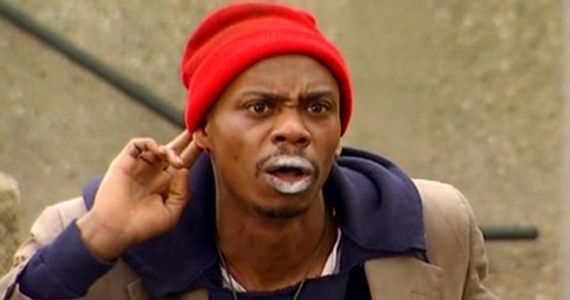
“You can be mad and laughing at the same time. I don’t know if those are mutually exclusive. In America, there’s just a lot of humor about race. If you listen to almost any standup comedian, they’ll have jokes about race. If you look at Dave Chappelle, Chappelle’s Show, he deals with stereotypes head on. He shows you the stereotypes and he pulls a lot of humor out of that. I don’t think it’s unique to me at all.
“I think that’s how Americans — that’s how we — deal with race. We often joke about it, and we often use jokes to even enter into this really difficult and dark subject. I do think that racism can be funny, and I think it can be funny in really different ways. It can be funny because of the inherent absurdity of the racist ideas themselves.
“You know deep down it’s wrong to boil somebody down to a handful of stereotypes that are connected to their skin color, and the absurdity of that idea is what makes you laugh. That’s one way that racism can be funny.
“The other way that racism can be funny is that you actually think that’s true. You think it actually is true that this person can be boiled down to a handful of stereotypes. So that dividing line there is sometimes difficult for us as Americans to figure out.”
These jokes can be tough to construct. Yang described the line between joking and more serious matters, and where to draw it.
“I do think it’s instinctive. I also think it has to do with being an insider versus being an outsider. There are certain jokes — like, I can joke about my mom, but you can’t.
“In the same way, I can joke about Asian Americans in a way that somebody who’s not Asian American would not be able to. So there’s something about that. The jokes themselves almost become a way of identifying yourself as an insider to that culture.”
Yang keeps busy, serving as the Library of Congress’s National Ambassador for Young People’s Literature for a two-year term. He was awarded the MacArthur Fellowship (a $625,000 grant), and currently writes for “Avatar: The Last Airbender” and “Superman.”
“I do try to seek out challenges in terms of my projects,” he said. “For each of my projects, I try to do something that I haven’t tried to do before. In terms of the way I live, I don’t try to seek anything out. I just try to find a balance.”
Image via: Hamline University